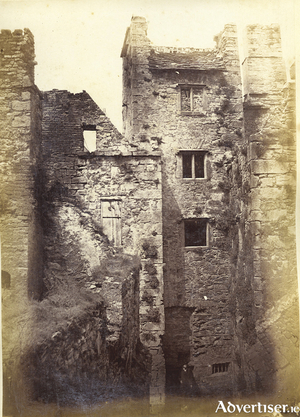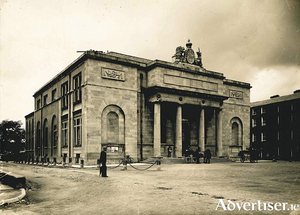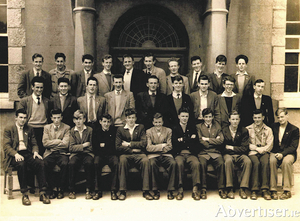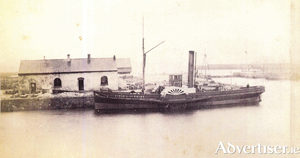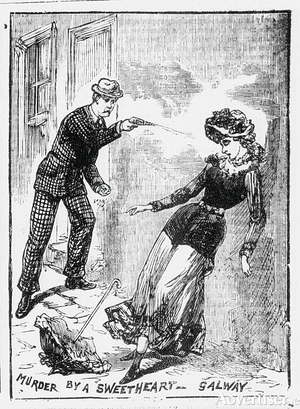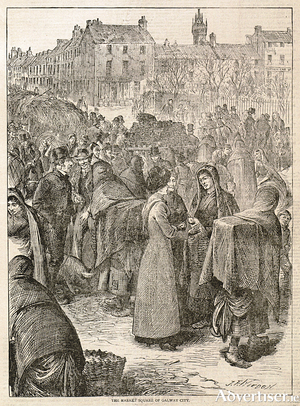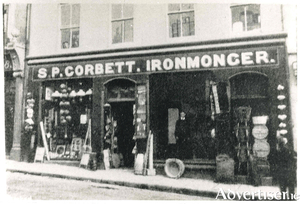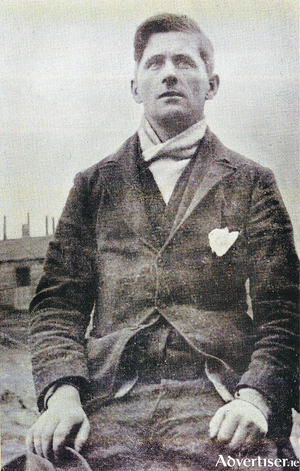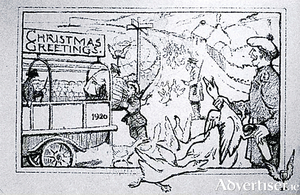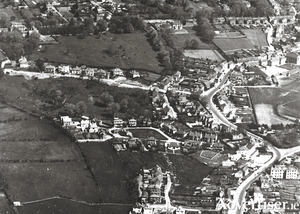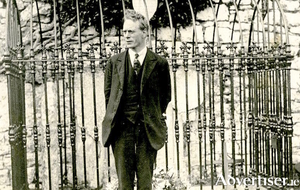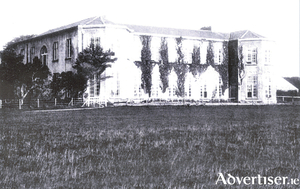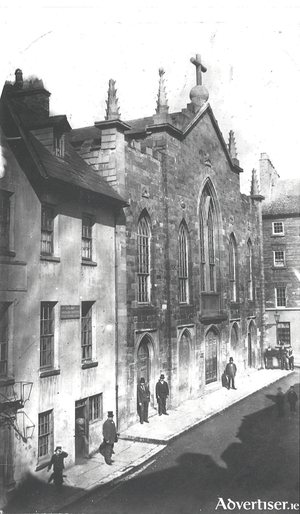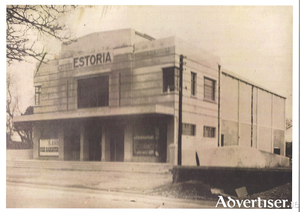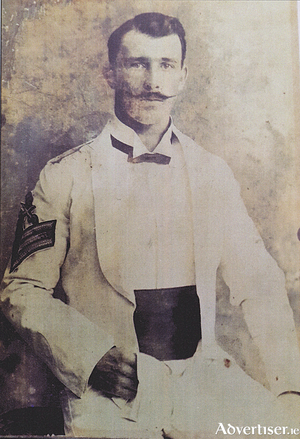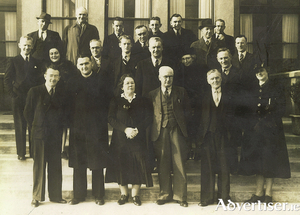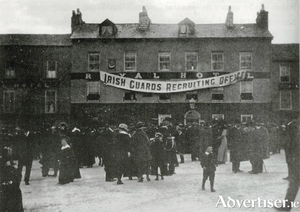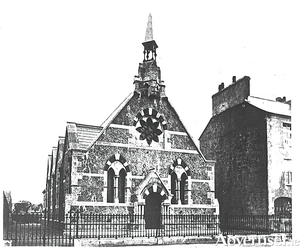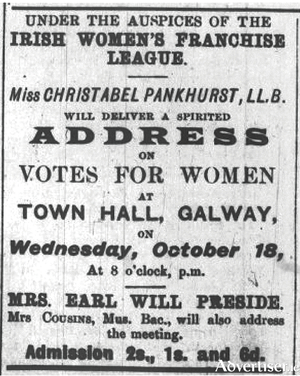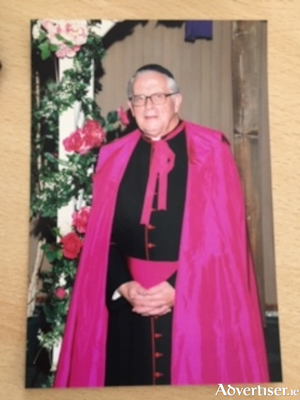Banks Castle
Thu, Feb 28, 2019
We came across this drawing in the National Library titled “A narrow street in Galway, c.1840-1850”. The clue is in the handwriting at the top of the image, ‘Castle Bank’. In fact, it was a courtyard, not a street, looking at the back of Banks Castle off High Street. Our photograph (courtesy of the Chetham Library in Manchester), shows us much the same view about 25 years later. The property is now part of the King’s Head.
Read more ...Galway Courthouse c1870
Thu, Feb 21, 2019
“This fine building, which is superior to most provincial seats of justice, stands at Newtown-Smith, on the site of the ancient and venerable abbey of the Franciscans, which by the Charter of Charles II ‘is to be and remain part of the County of Galway forever’. It was commenced in 1812, and on 1st of April, 1815, was opened for the reception of the then going judges of assize.
Read more ...The Bish Leaving Cert class of 1960
Thu, Feb 14, 2019
The distinguished historian Gerry Hayes McCoy, a graduate of the Bish, once wrote of his alma mater: “Going to school is the greatest emotional experience of a lifetime, the greatest and least forgettable. Do you remember how the sun shone through that wire-meshed window, shone in on your childhood, the bright sun of long ago? Do you smell again the smell of school-warm varnish, leather, bread and butter, ink, powder, books, boys? Do you remember the flinty yard, tree-shaded; the speaking river; the screaming seagulls on a frosty morning? How cold could it be! Do you remember the lighting of the fire — how it smoked without heat, how it smouldered. Do you remember the wonderful morning when the key of the school was lost and who-was-it was sent up town to the shop where — how unsporting — they kept a box of keys to thwart just so delirious a possibility.”
Read more ...The first steamboat on Galway Bay
Wed, Feb 06, 2019
The Citie of the Tribes was the name given to the first steamboat to sail on the bay. She was built in South Shields and registered on December 24, 1872, for the pioneering Galway Steamboat Company and her arrival here was hailed as the precursor of the new shipping millennium, the era of steam.
Read more ...When the hangman came to Galway
Thu, Jan 31, 2019
In 1883, Thomas Parry, a 26-year-old assistant shepherd, was working for Major Thomas Braddell in Wexford. Also working there was Alice Burns, a 19-year-old Galway girl. The two had a whirlwind romance, Parry was deeply in love and bought her a beautiful ring and they became engaged.
Read more ...The market square in Galway city, 1883
Thu, Jan 24, 2019
The Square appears as a green piece of land outside the city walls on the early maps of Galway. The 1651 map shows it more or less in the shape it is today. In 1710, Edward Eyre (whose family had come over with the Cromwellians) became mayor of the city. He lived in a house roughly where the Meyrick Hotel is today and the patch of land in front of his house was known as ‘The Mayor’s Garden’. He presented it to the city and it became known as Eyre Square
Read more ...Corbett’s, a brief history
Thu, Jan 17, 2019
SP Corbett, ironmonger (known as Sam), opened a hardware shop for business in a premises on Williamsgate Street in 1894. It was a one-stop shop where one could get lost with the extraordinary array of goods, even those on display on the footpath. Inside, one could buy spade trees, ropes, churns, seed potatoes, Fenton’s cutlery, washing boards, kitchen chairs, oil lamps, fowling pieces, portmanteaus, non-poisonous sheep dips, perambulators, mail cars, threshing machines, wallpaper, glass and earthenware, oil paints in colours of every description, Persse’s whiskies, brass and iron bedsteads, hair, fibre and spring mattresses, linoleums, bamboo and wicker goods, guns and ammunition, wallpaper, mowers, reapers and binders, and everything a fisherman might need.
Read more ...Liam Ó Briain, Irish rebel
Thu, Jan 10, 2019
Liam Ó Briain was born in Dublin in 1888. In 1916 he helped print the Proclamation and he served with Michael Mallin in the College of Surgeons during the Rising. He was subsequently interned in Wandsworth Prison and in Frongoch. In 1917 he was appointed professor of romance languages in UCG. He was jailed in Belfast in 1919/20. When he returned to Galway he was appointed as a judge in the Republican Courts In late 1920, he was having dinner in college when he was arrested by the Black and Tans, and jailed for 13 months in Galway and the Curragh. Some of his experiences in prison are vividly described in a recently published book.
Read more ...A Christmas card from Salthill, 1920
Thu, Dec 20, 2018
As the War of Independence hotted up, the British authorities sent the Black and Tans and the Auxiliaries to Ireland to support the RIC. D Company of the Auxiliaries was stationed at Lenaboy Castle and at The Retreat in Rockbarton.
Read more ...Devon Park, a brief history
Thu, Dec 13, 2018
The area we know as Devon Park in Salthill was originally part of the Lenaboy estate which belonged to the O’Hara family, who were based in Lenaboy Castle. The entire left hand side of our aerial photograph (c1940) was part of the estate, originally a green field site, the outer wall of which ran along the main Salthill Road. Bertie Simmons knocked part of that wall in the early 1930s and built two houses, one at the corner (where the fish shop is today) and one behind it where Hartigans lived.
Read more ...Galway to mark centenary of 1918 election
Thu, Dec 13, 2018
In the UK general election of 1918 Irish men, and for the first time, Irish women, struck a major blow for Ireland's right to self-determination, by electing 73 Sinn Féin MPs - almost 70 per cent of the vote.
Read more ...Merlin Park House
Thu, Dec 06, 2018
The Blake family started work on the construction of Merlin Park House in 1808 and it was completed in 1812. It cost £12,000 to build and provided much needed employment for many local skilled workers and labourers. Getting materials to the location proved difficult – it was said that more than 40 mules were used to transport goods and building materials from Galway to the site.
Read more ...The Galway Mechanics’ Institute 1838-2018
Thu, Nov 29, 2018
Mechanics’ institutes originated in Scotland in the 1820s. In 1826 a committee formed the first such institute in Galway when it set out a library and newspaper reading room in the ballroom of the Corn Exchange in Eyre Square. Its primary aim was educational and it had rules prohibiting discussion of politics and religion. Difficulties arose when some of the patrons of the facility presumed they could tell the members how to vote in an election and so the institute collapsed.
Read more ...The palace of dreams
Thu, Nov 22, 2018
Eighty nine years ago this week, on November 22, 1939, the Estoria Cinema opened at Nile Lodge. It had 776 seats and two showings a night at 6.45pm and 8.45pm. It cost two shillings to sit in the balcony and the prices for the parterre were 1/4 and 9d (including tax). There were matinees on Thursdays (half day in Galway), Saturdays, and Sundays. You could book at the cinema or by phone (Galway 101) from 12 noon to 2pm and from 6pm. The building was constructed by John McNally & Co with John Connolly as foreman. The design was by Hubert O’Connor and Ralph Ryan was the electrical consultant.
Read more ...Galway and the Great War 1914-1918
Thu, Nov 08, 2018
On August 4 1914, Lt Col Henry Jourdain, Commander of the Connaught Rangers in Renmore Barracks, Galway, received mobilisation orders which changed the lives of thousands of families throughout the city and county. Urgent appeals for recruits were sent out. Hundreds of young men began arriving from all over Connacht. Temporary military camps were set up outside the barracks to cater for the recruits.
Read more ...The Salthill Citizens’ Association, c1946
Thu, Nov 01, 2018
The first concerted move to improve Salthill (that I know of) was in 1882 when funds were collected locally and the Salthill Improvement Company was set up to improve the resort. The prevention of pollution was a priority. The company had its ups and downs and eventually died off. The first meeting of the Galway Urban District Council in 1925 had a deputation from Salthill who listed proposed improvements, In the 1930s a Salthill Development Committee was set up.
Read more ...Galway City Museum to mark the end of WWI
Thu, Oct 25, 2018
On Saturday November 10, the eve of the centenary of the armistice which ended WWI, Galway City Museum will host a special lecture on The Great War of 1914 to 1918.
Read more ...The Columban Hall
Thu, Oct 25, 2018
The Columban Hall is described as a bizarre high-Victorian building with a gabled facade of opus incertum with a small porch, polychrome arches to the windows, a star shaped west window, and a curious chunky top-knot. It was originally built as a Congregational Church, designed by Raffles Brown and completed in 1863. Our photograph (courtesy of the National Library) was taken just a few years later.
Read more ...Christabel Pankhurst in Galway
Wed, Oct 17, 2018
Our image this week is of a newspaper advertisement for an extraordinary meeting that took place in the Town Hall 100 years ago today.
Read more ...OBITUARY - The death of Monivea’s Msgr. James J. Loughnane PA. VF. in Los Angeles.
Mon, Oct 15, 2018
Monivea native Monsignor James J. Loughnane Protonotary Apostolic, Vicar Forane & pastor of St. Denis in Diamond Bar, passed away at the age of 81 at St. Jude Hospital in Fullerton on Monday evening the 17th of September following complications post emergency surgery.
Read more ...